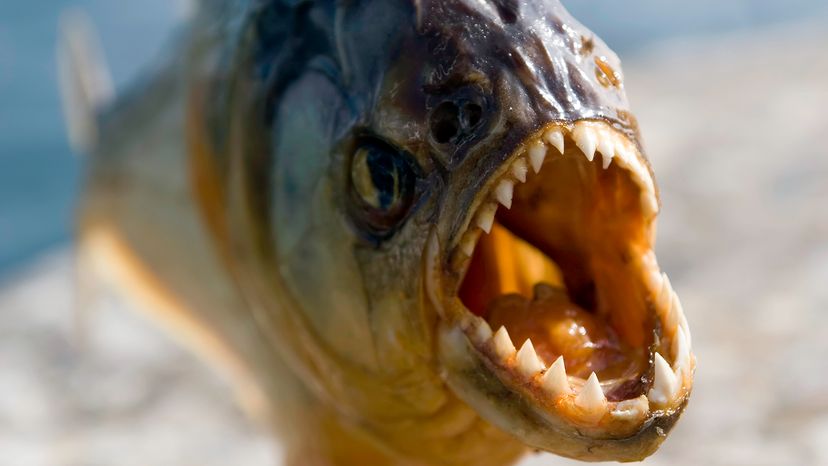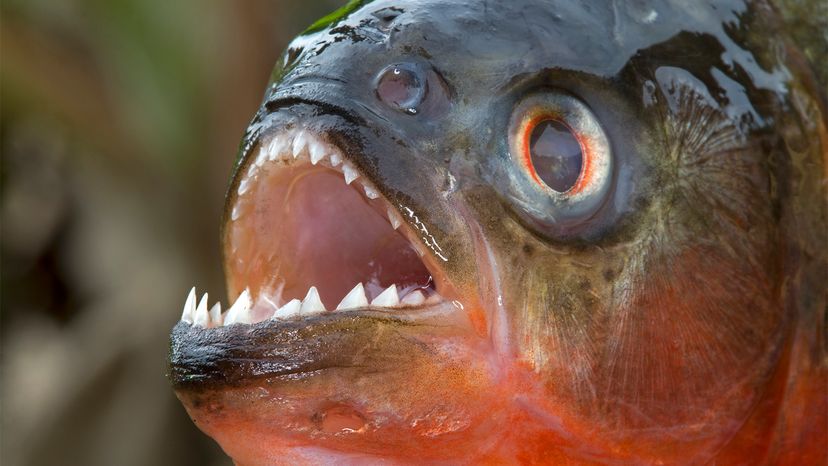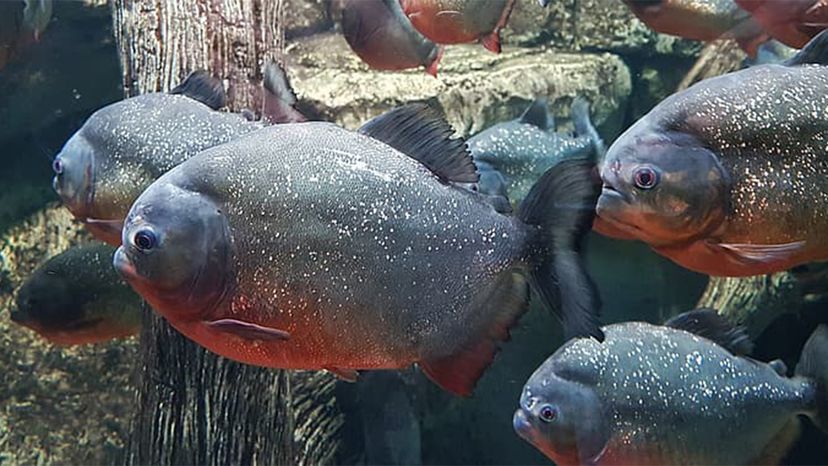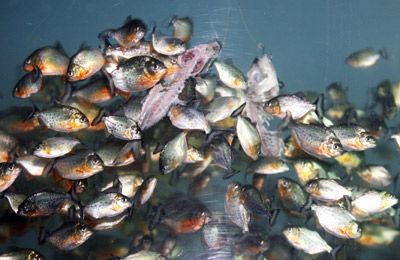We don't know a lot about the habits of Piranhas in the wild; much of what we know, we learned from keeping them in aquaria, and most animals tend to act differently in captivity. The largest of modern piranha genera grow to be about 2 feet (0.6 meters) in length, but many species max out at about half that length.
Their jaws are lined with a single row of saw-like interlocking teeth that resemble shark teeth — razor-sharp and always exposed, due to a pronounced underbite.
Most piranha eat meat, but just because you have a jaw three times more powerful than a similarly sized alligator and can bite through the plates of the most heavily armored fish of the Amazon doesn't mean you have to eat meat all the time.
Piranhas, like most wild animals, eat what they can get. A typical piranha diet includes a lot of aquatic invertebrates (worms and insects), other fish, some carrion they find in the river, as well as seeds and vegetation.
Depending on the species, the ratio of these elements vary: Some types of piranha are entirely vegetarian, while others, like the infamous red-bellied piranha, reportedly wait in the weeds every evening in groups of 20 to 30 to ambush prey.





